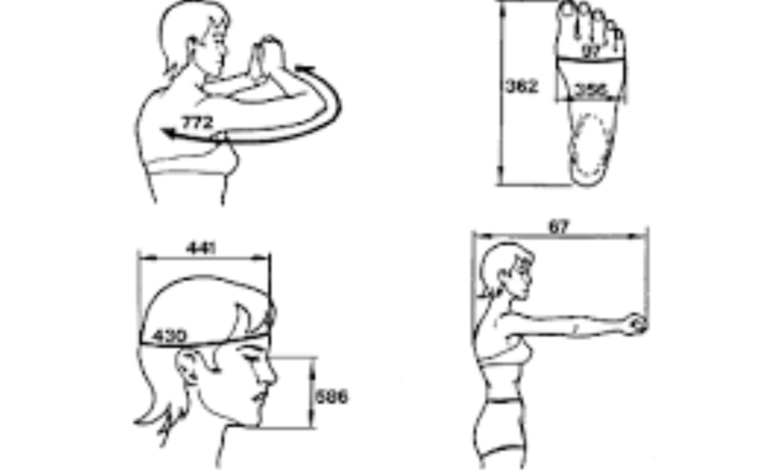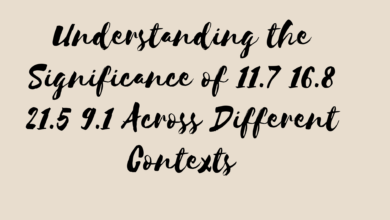Introduction to 21.8 9.7: What Does This Measurement Mean?

In the world of measurements, numbers often represent more than just quantities—they carry specific meanings, especially when written in a format like “21.8 9.7.” This combination of numbers can be found in a variety of contexts, ranging from technical specifications to geographical coordinates. But what does this specific set of numbers represent? In this blog post, we’ll dive deep into understanding the meaning and significance of “21.8 9.7” in different fields.
Whether you are exploring technology, design, or science, understanding these measurements can help in various applications. Let’s explore how these numbers can fit into different contexts and why they matter in today’s world.
What Does “21.8 9.7” Represent?
At first glance, “21.8 9.7” may look like two separate numbers. But their significance can vary depending on the context in which they are used. Here’s how they could be interpreted:
Coordinates in Geography or Mapping
One of the most common uses of “21.8 9.7” could be geographical coordinates. Coordinates are a way to define locations on Earth with great precision, and the most common system used is the latitude and longitude format. These measurements can pinpoint specific places across the globe, providing useful information for travel, navigation, and geographical analysis.
For example, if we take “21.8 9.7” as a set of coordinates:
- Latitude 21.8° N
- Longitude 9.7° E
These coordinates place us in the vicinity of North Africa, possibly somewhere in the Sahara Desert region. Countries like Algeria, Mali, or Niger may fall within this range, marking the significance of the coordinates in areas related to cartography, navigation, and even humanitarian efforts. Geographers, explorers, and GPS users rely on these coordinates daily to understand and navigate our planet.
Aspect Ratio in Technology and Design
Another interpretation of “21.8 9.7” could be an aspect ratio—a critical concept in technology, especially for displays, monitors, and digital screens. The aspect ratio is the proportional relationship between the width and height of a screen or any visual display.
For instance, a 21.8:9.7 aspect ratio could refer to an ultra-wide display used in high-end televisions, monitors, or smartphones. This wide aspect ratio offers more space on the screen for users to engage with multiple applications or enjoy cinematic experiences.
- Phones and Tablets: A screen with such an aspect ratio can display more content at once, which is ideal for scrolling through social media, watching movies, or multitasking.
- Monitors: For professionals, such as graphic designers or video editors, ultrawide monitors with unique aspect ratios like 21.8:9.7 provide more workspace, making it easier to handle multiple windows or applications simultaneously.
Measurements in Science or Engineering
In scientific experiments or engineering designs, “21.8 9.7” could represent a ratio or set of dimensions critical to understanding the properties of a material or the specifications of a machine. For example, it could describe the ratio of two materials in a chemical reaction or the dimensions of an object in physics experiments.
Measurements like these help scientists and engineers maintain precision and accuracy in their work. Whether it’s a lab experiment or designing machinery, accurate measurements are essential to achieving reliable and reproducible results.
Applications of “21.8 9.7” in Various Fields
Now that we’ve looked at some potential meanings, let’s explore how “21.8 9.7” impacts various fields and why it’s important to understand these numbers in real-world applications.
Technology and Electronics
Technology is one of the main fields where “21.8 9.7” plays a role, particularly in terms of aspect ratios for displays. Let’s break this down into simpler terms:
- Smartphones and Tablets: With more people using mobile devices for media consumption, productivity, and gaming, the demand for larger screens with unique aspect ratios is growing. A display with a 21.8:9.7 ratio offers a much wider field of view, making it easier to watch videos in a cinema-like format or use multiple apps side-by-side.
- Ultrawide Monitors: For professionals who need to use multiple programs simultaneously (e.g., video editing software, spreadsheets, and web browsers), a 21.8:9.7 monitor allows them to do this without constantly switching between tabs. The wide screen provides the “real estate” needed for efficient multitasking.
Scientific Measurements and Engineering
In scientific research or engineering, precise measurements are crucial. “21.8 9.7” could be used in various ways:
- Ratios in Experiments: When conducting chemical reactions or physical experiments, ratios like these are used to determine the exact proportions of substances to achieve specific results.
- Prototyping: Engineers designing new products might use a set of measurements like 21.8:9.7 to define the physical properties or dimensions of a part.
These accurate ratios and measurements are vital in creating products and conducting experiments where precision can make a significant difference.
Cartography and Geographic Studies
Geographical coordinates, such as “21.8 9.7,” are used extensively in fields like cartography (the art of map-making) and geographic studies. For example, geographers rely on these coordinates for:
- Mapping: Creating detailed and accurate maps of the world, including political boundaries, terrain features, and population centers.
- Navigation: GPS devices and navigation systems use coordinates like these to help people find their way around the globe, whether they’re driving, walking, or sailing.
Accurate coordinates help ensure that people can reach their destinations safely and effectively.
How Do Aspect Ratios Affect Us?
The aspect ratio is more than just a number for tech enthusiasts. It influences how we interact with our devices and the content we consume. Here are a few examples of how aspect ratios affect the user experience:
In Entertainment
A 21.8:9.7 aspect ratio offers a cinematic viewing experience. Movies, especially those shot in widescreen formats, are better suited for wide screens. Watching these films on a device with an aspect ratio like this allows the audience to feel as though they’re in the middle of the action.
In Productivity
A wide screen can make multitasking much easier. With more space on the screen, users can have multiple windows open at once, improving productivity. For example, you can have a web browser open next to a word processor while checking emails—all without having to switch between tabs.
In Gaming
Gamers benefit greatly from wider aspect ratios as they offer a larger field of view in games, which can lead to a more immersive experience. Whether it’s a role-playing game, a racing game, or a first-person shooter, a wider screen offers more action and less need for scrolling or zooming.
The Future of “21.8 9.7” and Similar Measurements
As technology continues to advance, we are likely to see more devices and products with unconventional aspect ratios like 21.8:9.7. Whether it’s in the form of televisions, smartphones, or even augmented reality (AR) displays, wide aspect ratios are gaining popularity.
In geography and cartography, advancements in GPS technology and satellite mapping are making it easier to navigate and identify locations using precise coordinates like “21.8 9.7.”
Conclusion
Whether it’s geographical coordinates, aspect ratios in tech products, or scientific measurements, “21.8 9.7” has multiple meanings depending on the context in which it is used. Understanding these measurements can offer valuable insights into how we use technology, navigate the world, and approach design projects.
The combination of numbers holds importance in various industries, from mobile tech and entertainment to engineering and geographic studies. As technology evolves and more advanced systems are created, understanding measurements like these will continue to be essential for consumers, professionals, and researchers alike.
By gaining knowledge about measurements like “21.8 9.7,” you can better understand the products you use, how to interact with them, and why they matter in both everyday life and professional settings.
FAQs
What is the significance of 21.8 9.7 in geographic coordinates? The coordinates 21.8° N, 9.7° E point to a region in North Africa, possibly in the Sahara Desert, and can be used for navigation and mapping purposes.
How does aspect ratio like 21.8 9.7 affect screen use? A 21.8:9.7 aspect ratio provides a wide-format screen, perfect for enjoying movies, multitasking, and gaming. It offers a better viewing experience compared to standard screens.
Is 21.8 9.7 commonly used in technology? Yes, aspect ratios like 21.8:9.7 are increasingly common in smartphones, ultrawide monitors, and televisions. They are designed for optimal content viewing and multitasking.
Can 21.8 9.7 be used in scientific measurements? Yes, these numbers could be used to represent specific ratios in scientific experiments, such as material properties or experimental setups, ensuring precision and accuracy.
Where is the location for coordinates 21.8 9.7? These coordinates are typically found in North Africa, near countries like Algeria, Mali, or Niger. They





